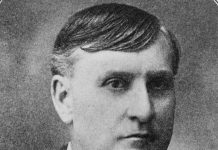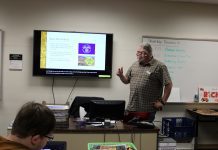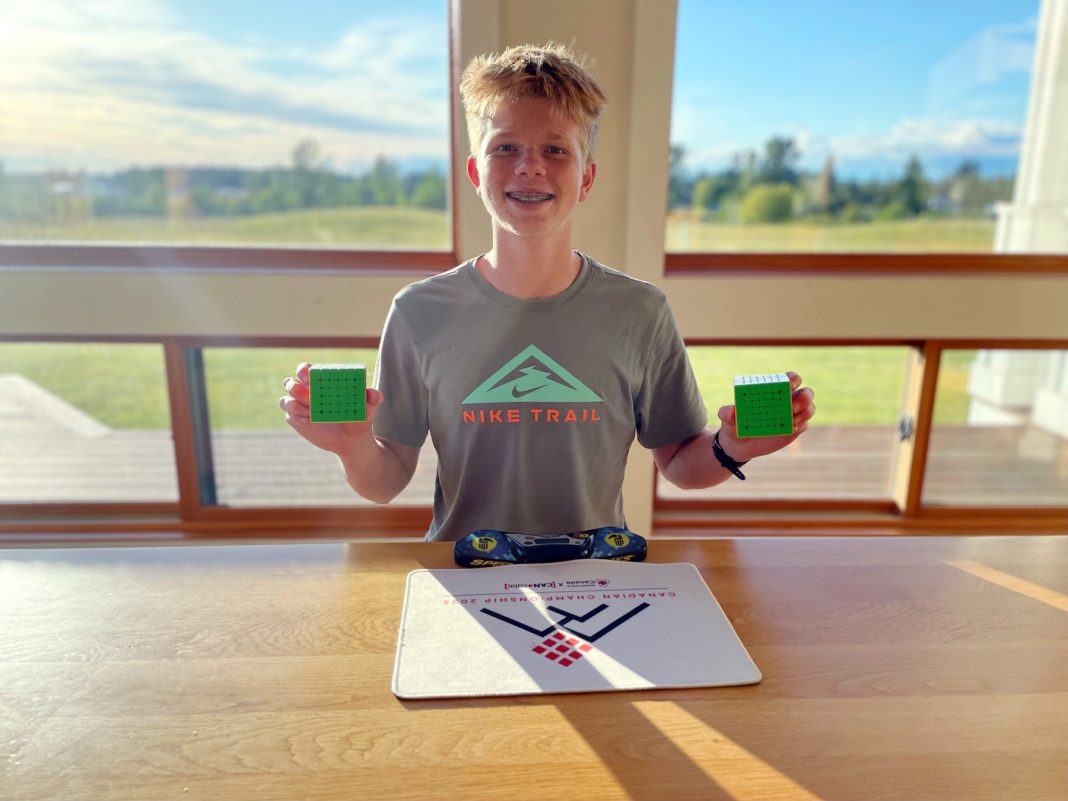We’ve all fiddled with a Rubik’s Cube. These colorful puzzles have appeared in everyone’s household at some point. You picked it up for a few minutes only to set it down in frustration because getting all six sides to be a solid color felt impossible. If someone miraculously got one side to be a solid color, you deemed them smart, and two sides launched them into genius level. I don’t remember ever seeing one solved. There was one floating around my college house on York Street back in the day; my roommate peeled all the stickers off so we finally had an all-black “solved” Rubik’s Cube.
Had Jack Anderson been around, we could have handed him the cube and had a properly solved Rubik’s Cube in mere moments.
Anderson just wrapped up his junior year at Meridian High School. He appears to be a typical Whatcom County high school student; he runs track and cross country, gets good grades, and is looking into colleges for after high school. But Anderson has also mastered the not-so-typical skill of being one of the country’s top Cubers. What’s a Cuber? A person who competitively competes against the clock and others in competition to see who can solve a Rubik’s Cube the fastest.
You may envision an audience fighting yawns while competitors take days to solve this mind-bending puzzle — but you’d be wrong. This is a fast-paced, intense competition that requires the combination of a sharp mind and incredibly nimble fingers.

Anderson’s fastest time solving the traditional 3x3x3 Rubik’s Cube is a mind-boggling 5.2 seconds. The fastest time ever recorded in competition is held by Max Park, with a speed of 3.13 seconds.
Onlookers best not blink if they want to truly take a top-notch Cuber’s performance.
A Pandemic and Netflix
In 2020, Anderson found himself stuck at home like the rest of us. While the world was locked down, Netflix released the documentary The Speed Cubers, which follows some of the world’s top Cubers as they prepare and compete at the highest levels.
“I watched the movie, and was like, dang, that was pretty cool. I bought a game the next day and did it with my cousins,” Anderson says. “We got down to about forty-five seconds in the next few months.”
While his cousins moved on from cubing, Anderson stuck with it and entered his first competition in September of 2021. He’d learned that there’s much more to cubing than the standard 3x3x3 cubes. According to the Museum of Play, the Rubik’s Cube — original named the Magic Cube — was invented by Erno Rubik in 1974. In 1980, the cube had been renamed to the Rubik’s Cube and hit the marketplace. Since that time, the puzzle has continued to grow in popularity.
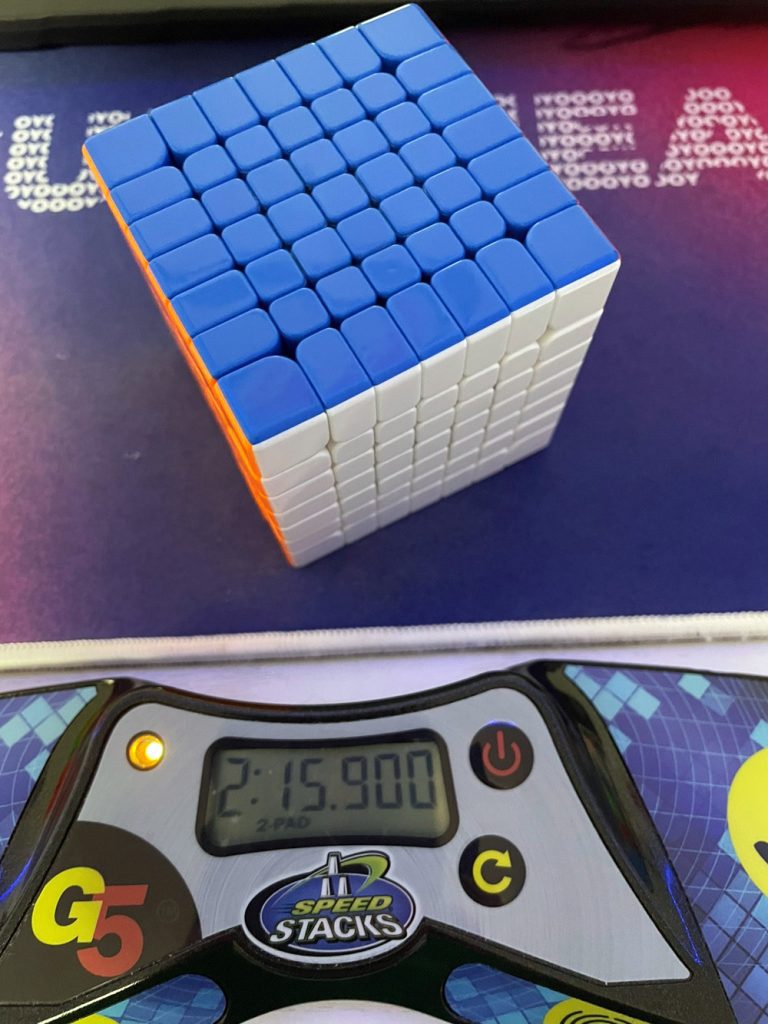
Today, Rubik’s Cubes come in different shapes and sizes, creating an opportunity for different divisions at Cuber competitions. Anderson prefers competing with the larger-sized cubes; he’s ranked 52nd in the nation for solving the 7x7x7; his mean time for solving this cube is 2:37. He has hopes of dramatically shaving off some time in the next month. With track season ended and school wrapping up, he’s focusing more time on cubing practice.
The World Cube Association’s North American Championship takes place July 18th–21st in Minneapolis, Minnesota, and Anderson will be there to compete. He has an ambitious goal to crack the top 20 and get into the finals.
How Speed Cubing Works
At each table in a speed cubing competition, you find a competitor, a judge, a timing mat, and a covered cube. Once the Cuber is ready, the judge reveals the cube. The Cuber has time to inspect the cube before setting it down, hitting the mat, picking it back up, and solving it at lightning speed.
Cubers solve puzzles so quickly by learning algorithms tied to how the cube has been mixed up. There are thousands of algorithms to memorize, and solving the puzzles becomes instinctual over time.
“There’s always going to be more to learn in Cubing,” Anderson says. “That’s the fun thing about it. No one is ever going to learn it all; there are always more advanced algorithms.”
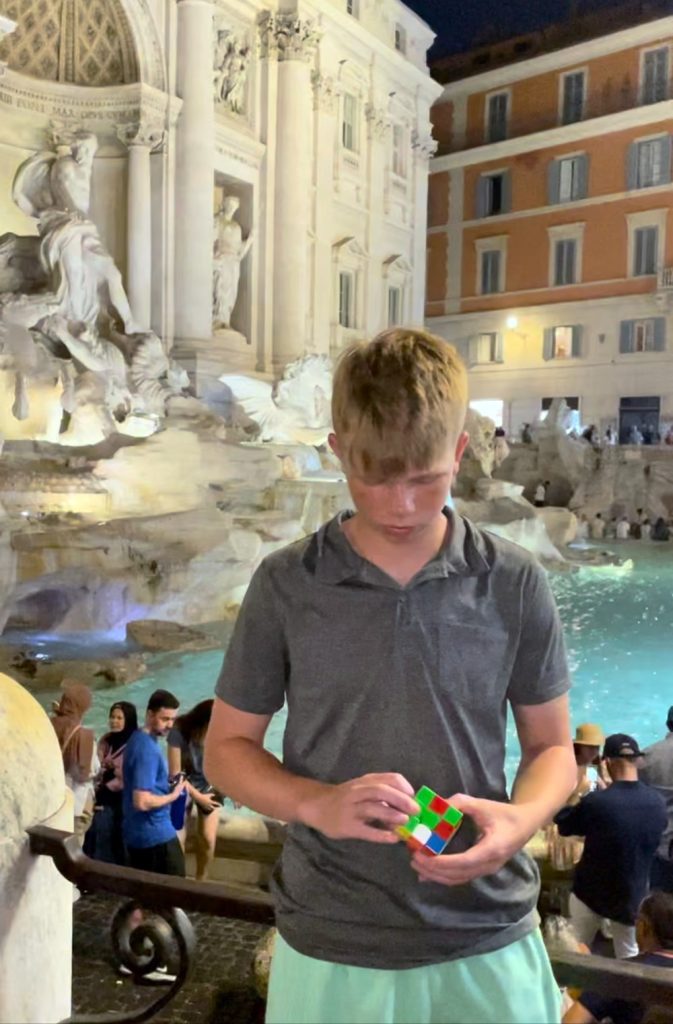
In practice, he’ll work on learning new algorithms and sheer speed. For the larger cubes, Anderson feels the key is working efficiently with no pauses. A Google search reveals a wonderful world of cubing, where competitors compete with cubes of different sizes and shapes — sometimes even blindfolded.
You can see Anderson solving cubes in competition and even in front of the Trevi Fountain in Rome on his YouTube channel. Warning, watching Anderson solve Rubik’s Cube’s will be humbling and may cost you a few dollars and a lot of time if you decide you, too, would like to become a Speed Cuber.






